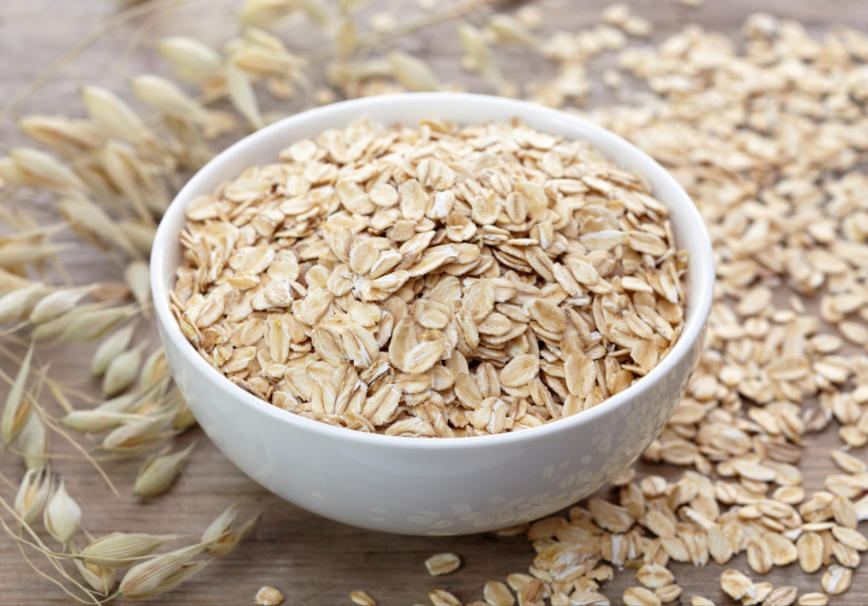If you’ve ever checked the label on a cereal box, a bottle of oat milk, or an electrolyte drink, you may have come across tripotassium phosphate. It’s one of those ingredients that often goes unnoticed until you start paying attention. Once you see it, though, the name itself raises questions. What is it? Why is it in food? And should you be worried about consuming it?
Tripotassium phosphate has been used for decades in food manufacturing. It helps stabilize texture, maintain acidity, prevent clumping, and keep fortified foods evenly mixed. Although the chemical-sounding name makes some people nervous, the ingredient serves practical purposes that help ensure consistency, safety, and quality. Let’s walk through everything you need to know.
1. Introduction to Tripotassium Phosphate
Tripotassium phosphate appears in a range of packaged foods—from crunchy cereals to smooth coffee creamers. Most of the time, consumers don’t notice it until they start reading ingredient labels more carefully. Food companies use it because it helps products stay stable, last longer, and maintain their intended texture.
Cereals stay crisp. Plant-based milks stay blended. Nutrients disperse evenly instead of sinking. These benefits make tripotassium phosphate especially valuable for food manufacturers.
2. What Is Tripotassium Phosphate?
Tripotassium phosphate is an inorganic mineral salt composed of potassium and phosphate. Its chemical formula, K₃PO₄, shows that it contains three potassium ions bonded to a single phosphate ion. The compound appears as a white, crystalline powder that dissolves easily in water and forms a mildly alkaline solution.
2.1 Why It’s Used in Foods
Tripotassium phosphate belongs to a group of ingredients known as buffering agents, which help control acidity. It also functions as a stabilizer, dispersant, and anti-caking agent.
2.2 Regulatory Status
- The FDA classifies it as GRAS (Generally Recognized as Safe).
- In the European Union, it is labeled E340(iii) and regulated by the European Food Safety Authority (EFSA).
These agencies periodically review phosphate additives to ensure they remain safe.
3. How Tripotassium Phosphate Is Made
Tripotassium phosphate is synthesized through a controlled chemical reaction. Manufacturers combine phosphoric acid with potassium hydroxide or other potassium salts. The resulting compound is then filtered, crystallized, and purified to achieve food-grade quality.
3.1 Food Grade vs Industrial Grade
It’s important to distinguish between:
- Food-grade tripotassium phosphate — highly purified and safe for consumption
- Industrial-grade tripotassium phosphate — used in cleaners, degreasers, and metal treatments
Only food-grade forms are used in edible products.
4. Why Tripotassium Phosphate Is Added to Food
Tripotassium phosphate serves multiple functional roles in food processing:
4.1 pH Control
It helps maintain a stable acidity level, essential for flavor and shelf life.
4.2 Emulsification and Stabilization
Plant-based milks and creamers depend on it to keep ingredients from separating.
4.3 Anti-Caking
Cereals and powdered mixes benefit from reduced clumping.
4.4 Nutrient Dispersion
Fortified foods use it to keep vitamins and minerals evenly distributed.
4.5 Texture Enhancement
Certain cheese products use phosphate salts to achieve smooth, meltable textures.
5. Common Foods That Contain Tripotassium Phosphate
You’ll most often encounter tripotassium phosphate in:
- Breakfast cereals
- Oat milk, almond milk, soy milk, and other plant-based milks
- Coffee creamers
- Processed cheese products
- Electrolyte drinks
- Some processed meats
On labels, it may appear as tripotassium phosphate, TKP, potassium phosphate, or E340.
6. Non-Food Uses of Tripotassium Phosphate
Outside the food industry, tripotassium phosphate appears in:
6.1 Cleaning Products
Its alkalinity helps cut through grease.
6.2 Metal Treatment
Used to prepare surfaces for painting or coating.
6.3 Water Treatment
Helps reduce mineral buildup in pipes and boilers.
Industrial-grade versions are not safe for consumption.
7. Health Benefits of Tripotassium Phosphate
Tripotassium phosphate itself isn’t a nutrient, but it does provide small amounts of potassium, which helps regulate:
- Muscle function
- Heart rhythm
- Hydration levels
- Nerve signaling
It also helps fortified foods deliver consistent doses of vitamins and minerals.
8. Potential Health Risks and Concerns
Despite its approved status, tripotassium phosphate carries a few considerations.
8.1 High Phosphorus Absorption
Your body absorbs phosphorus from additives more efficiently than from natural foods. Heavy reliance on processed foods can increase phosphorus intake.
8.2 Kidney Health
People with chronic kidney disease may need to limit phosphate additives.
8.3 Potassium Sensitivity
Those following potassium-restricted diets should be cautious.
8.4 Addressing Common Myths
There is no scientific evidence linking tripotassium phosphate to cancer or toxicity at approved levels.
9. Safety Evaluation and Regulations
9.1 FDA
Classified as GRAS and allowed in a wide range of food applications.
9.2 EFSA
Sets strict maximum usage levels under the E-number system.
9.3 International Authorities
JECFA (WHO/FAO) also finds it safe within regulated limits.
10. Tripotassium Phosphate vs Trisodium Phosphate
Although the names sound similar, the two chemicals have different uses:
- Tripotassium phosphate adds potassium and appears in foods.
- Trisodium phosphate (TSP) is more alkaline and found mostly in cleaning products.
Manufacturers avoid TSP when they want low-sodium formulations.
11. Tripotassium Phosphate vs Dipotassium Phosphate
Both serve as stabilizers, but:
- Dipotassium phosphate is milder and ideal for creamers or nutritional beverages.
- Tripotassium phosphate provides stronger buffering for pH-sensitive foods.
Both are considered safe.
12. Should You Avoid Tripotassium Phosphate?
Most people don’t need to avoid it. However:
- People with kidney disease
- Individuals on potassium-restricted diets
- Those who consume large amounts of ultra-processed foods
may want to monitor their intake. The additive itself is not inherently harmful—dietary patterns matter more.
13. How to Reduce or Replace Tripotassium Phosphate
You can easily limit your intake by:
- Choosing whole, minimally processed foods
- Looking for “no phosphates added” cereals or plant milks
- Making homemade plant-based milks
- Reading labels for E340, potassium phosphate, or TKP
You don’t need to eliminate food groups—just choose brands thoughtfully.
14. Frequently Asked Questions
Is tripotassium phosphate vegan?
Yes. It is mineral-based.
Is it synthetic?
Yes, though widely regulated.
Is it safe for children?
Yes, in normal food amounts.
Does it trigger allergies?
Allergies are extremely uncommon.
Is it allowed in organic products?
Typically no.
15. Conclusion
Tripotassium phosphate may sound technical, but it plays a practical role in modern food production. It stabilizes textures, keeps foods safe, and helps fortified products deliver nutrients consistently. Regulatory agencies across the world maintain that it is safe when used properly.
For most people, there is no need to avoid it. As long as you eat a balanced diet and limit overly processed foods, tripotassium phosphate is simply another functional ingredient doing its job behind the scenes.

